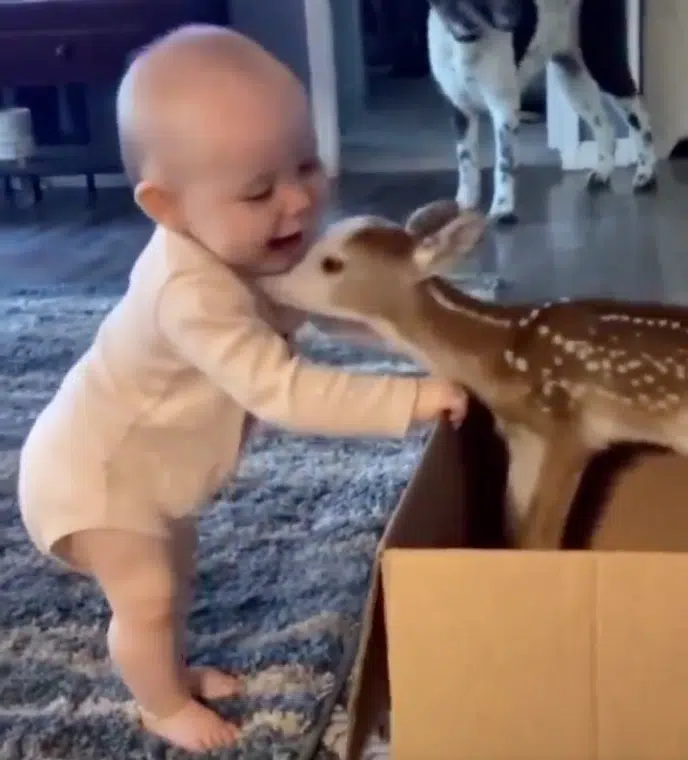In the heart of nature’s theater, a scene unfolds that tugs at the strings of our hearts – the endearing first meeting between a curious baby and an enchanting fawn. Prepare for a journey into a world where innocence reigns supreme, and the language of cuteness is spoken fluently. As we witness this adorable rendezvous, let’s also unravel the fascinating facts that make deer, especially fawns, such captivating denizens of the wild.
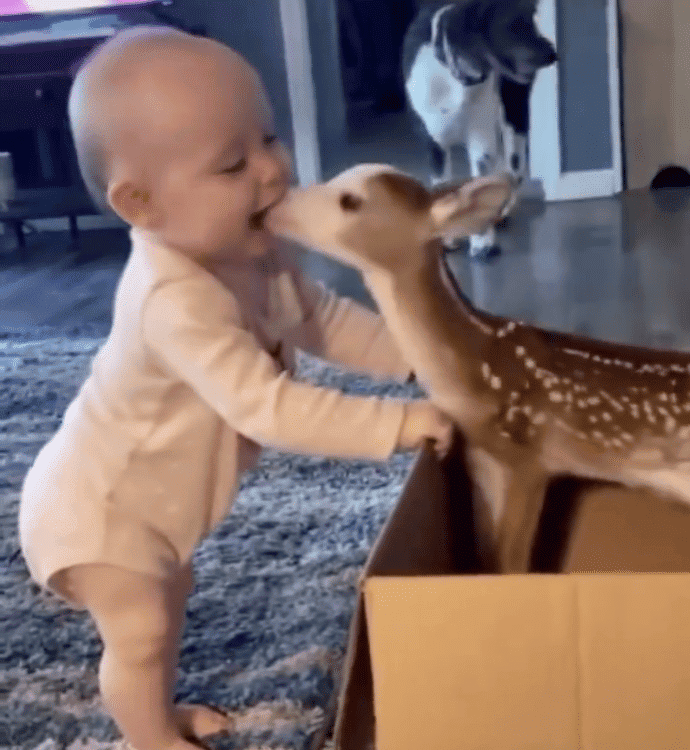
The Cuteness Overload
The Serendipitous Meeting
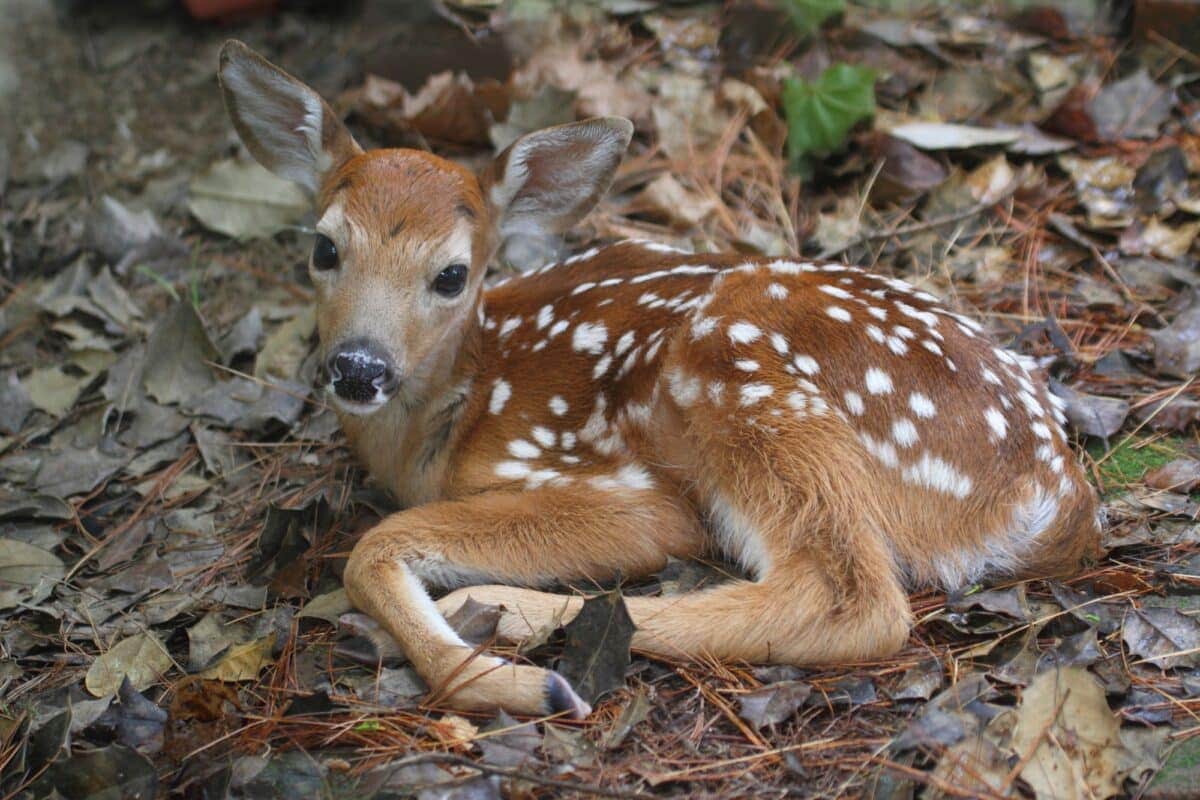
Picture a living room adorned with familiar comforts – plush sofas, soft rugs, and the gentle hum of indoor life. Now, place in the center of it all a cardboard box, containing not packages or possessions, but a baby deer. It’s an unexpected scene that sets the stage for an extraordinary encounter between the domestic and the wild. The fawn, wide-eyed and curious, peers out from the confines of the box, unknowingly awaiting the entrance of its soon-to-be friend – a baby.
Cuteness Unleashed

The baby and the fawn, both symbols of innocence, lock eyes, and the air becomes charged with the magic of an encounter that defies the boundaries of species. The cardboard box, once a vessel of containment, now becomes the backdrop for a dance of curiosity and cuteness overload.
Fascinating Facts About Deer
Domestication and Deer

While deer are wild animals, instances of them being temporarily housed in domestic settings are not uncommon. However, it’s crucial to remember that deer are best suited to their natural habitats.
Adaptability in the Wild
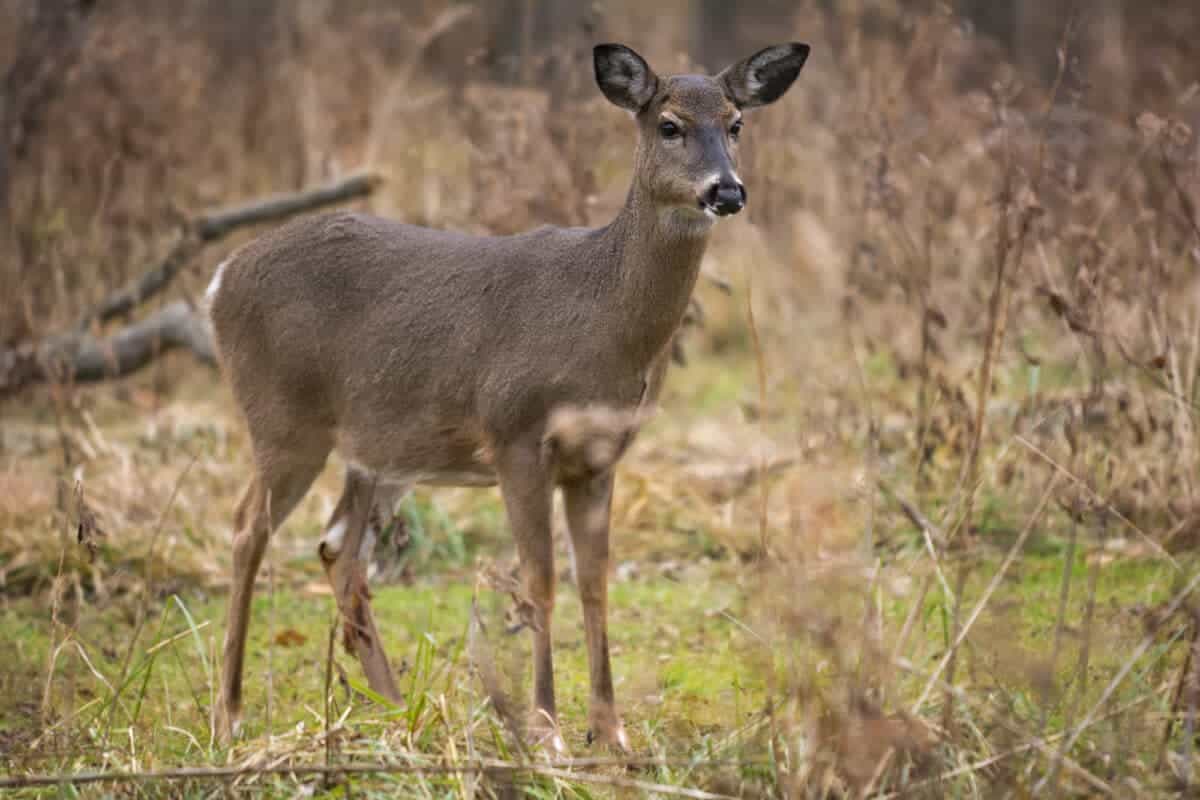
Deer are highly adaptable creatures, capable of thriving in various ecosystems. Their ability to adjust to changing environments contributes to their widespread distribution across different regions.
Incredible Leaping Abilities
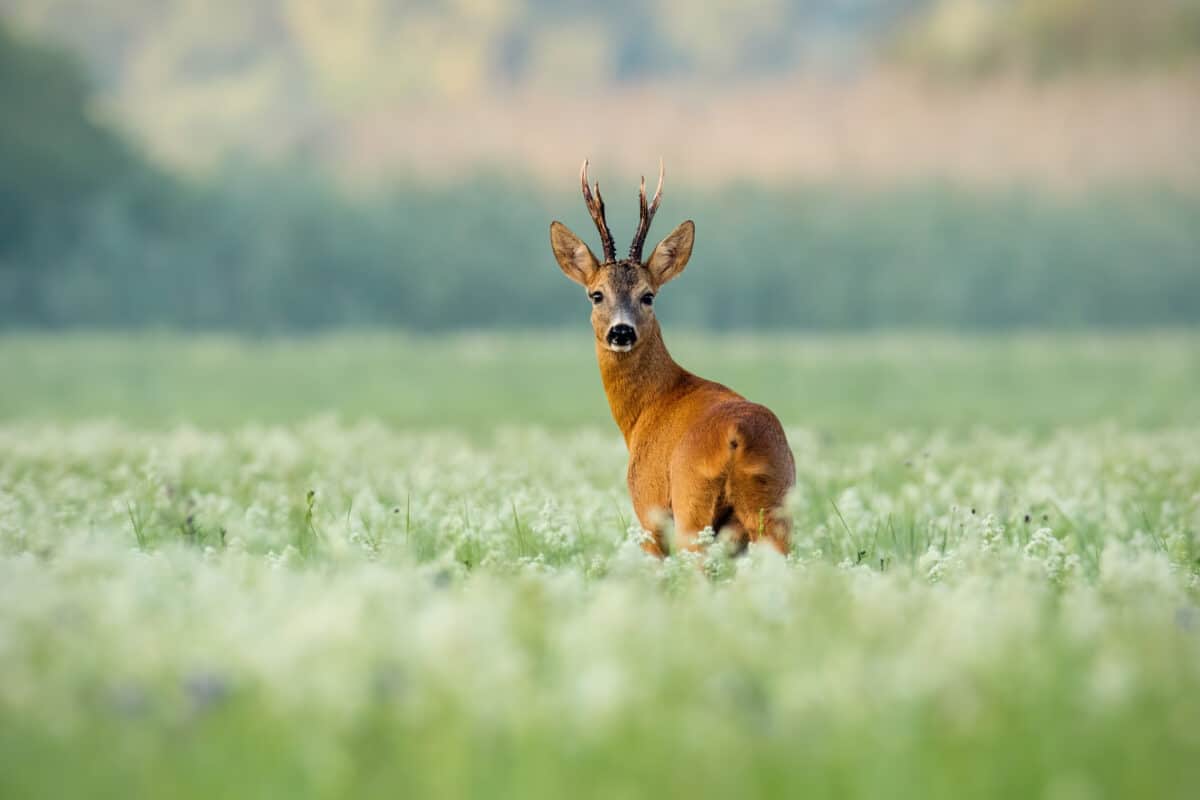
Fawns, known for their playfulness, exhibit remarkable leaping abilities. Their nimble movements are not only adorable but also serve as a means of exploration and play within their natural habitats.
Spotting Camouflage
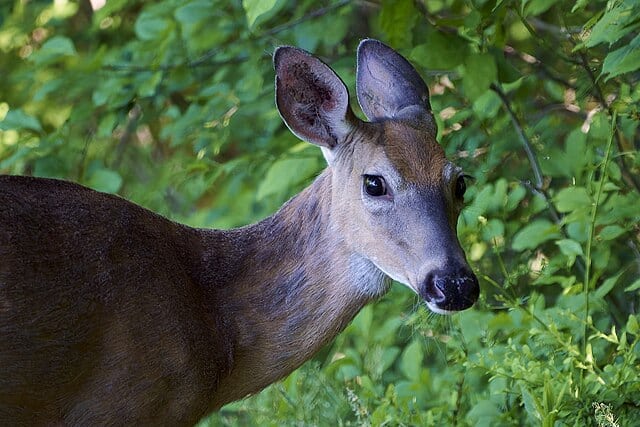
Fawns are born with spots on their fur, a form of natural camouflage that helps them blend into the dappled sunlight of wooded areas. This adaptation provides them with protection from predators during their early days.
Communication Through Tail Signals
Deer communicate with each other using various signals, and their tails play a vital role. A raised tail can signify alertness, while a lowered or tucked tail may convey fear or submission.
Bottom Line
As we witness the unlikely love story between a baby and a fawn within the confines of a living room, we are reminded of the delicate balance between the domestic and the wild. These moments of cuteness, where cardboard boxes become stages for enchanting encounters, unravel the unique connections that exist in the tapestry of life. And as we marvel at this living room love story, let us carry with us the appreciation for the wonders of nature, even when they find their way into the heart of our homes.
If you enjoyed this article as much as me, check out our related articles below for more!
Next up:
Join our Forum for free today!

- How To Treat A Komodo Dragon Bite - July 25, 2024
- Cute Lion Cubs Enthralled by “The Lion King” Movie - July 25, 2024
- Why Do Zebras Have Stripes - July 23, 2024

